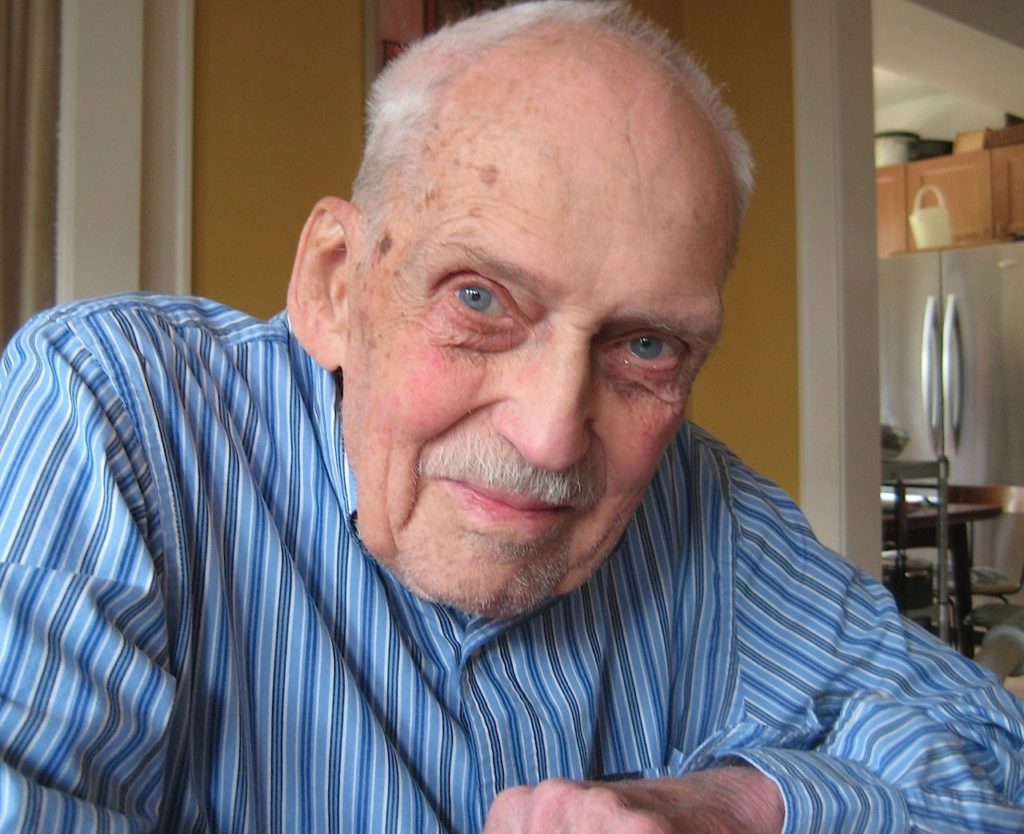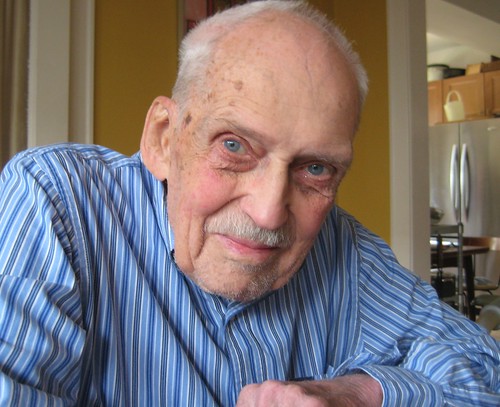
Election Day, 1948, Chicago.
This was a few years before my dad met my mom–by his account, she asked him out to dinner at Schrafft’s when they were both working at a Chicago urban renewal agency. He was at home on Nashville Avenue, a business student at Northwestern, a year and a half or so after his short hitch with the Army was over. By his account, he was lying on the living-room couch in the dark, listening to election returns on the radio. It seemed the vote might be going for Truman over his Republican challenger, Thomas Dewey of New York. But an announcer mentioned the Chicago Tribune was already calling the race and that an early edition declaring Dewey the winner was on the street. Dad said he went out to a newsstand and bought a copy just as as a Tribune delivery driver was trying to retrieve the early edition. (That’s the copy pictured above.)
One of the things I noticed when I was a kid looking at that front page was how little evidence the Tribune had to declare a winner. Much of the South looked like a lock for States’ Rights candidate Strom Thurmond. The Trib’s front-page copy mentioned polls were still open in most of the country, and where voting was over, the count was so preliminary–well, you just have to admire the power of wishful thinking. Of course the Tribune had to be first with the news: its owner, Colonel Robert R. McCormick, was an arch-anti-Democrat and sworn foe of FDR and everything he stood for. A 1936 story on the Democratic National Convention was headlined, “The Soviets Gather at Philadelphia.” A subhead in this 1948 edition’s lead election story reads, “New Deal Repudiated.”

What also got my attention, and still does, are signs the front page had been prepared in great haste. Several lines of type in the lead story’s second paragraph were inserted upside down. Also, the first three pages seem to be cast in a “typewriter” Courier typeface that appears slapdash and irregular, with some lines askew and poorly spaced; the type is different from the interior pages, which are set in what I assume was the paper’s regular type. (After some accidental research, the explanation for the appearance of those pages appears to be that the paper’s typesetters were on strike and that the copy in question was indeed typed, then cut and pasted somehow, then photographed for reproduction on the press. (See “Dewey Defeats Truman: The Rarely Told Story of Chicago Tribune’s Most Famous Issue” and “The Eleven Editions of the November 3, 1948, Chicago Tribune” — the latter a fascinating breakdown of what the paper published and when that day.)
Perhaps what I admire most about this journalistic exercise is the reporting on display in the lead story. In perhaps the only story he’s remembered for, the Trib’s Washington bureau chief, Arthur Sears Henning, declared the outcome of the vote:
“Dewey and Warren won a sweeping victory in the Presidential election yesterday.
“The early returns showed the Republican ticket leading Truman and Barkley pretty consistently in northern and western states. The indications were that the complete returns would disclose that Dewey won the Presidency by an overwhelming majority of electoral votes.”
Since the numbers didn’t bear out the tale, what was the source of that intelligence? Herbert Brownell, Dewey’s campaign manager.
Brownell, wrote Henning, “claimed that on the basis of the complete returns ‘we will wind up sweeping two-thirds of the states for the Republican ticket.’ ”
“As states definitely in the Republican column in the light of the fragmentary returns Brownell named Illinois, Ohio, Indiana, Connecticut, Delaware, Maine, Maryland, New Hampshire, Vermont, and South Dakota. Four years ago the Republicans carried only five of these states.
” ‘At this moment,’ said Brownell, ‘the polls have closed in 12 of the 48 states outside the solid south. These states have a total of 120 votes in the electoral college.
” ‘On the basis of reports which I have been receiving from organization leaders thruout the country, I am confident that the Dewey-Warren ticket has already carried 10 of these 12 states with a total of 101 of the 120 electoral votes.
” ‘In the other two states–Kentucky and West Virginia–returns are not yet conclusive but the trend to the Dewey-Warren ticket is heartening.’ “
Brownell wasn’t completely off-base, though Illinois, Ohio, West Virginia and Kentucky all went for Truman. Still, the paper went out on that limb on the basis of 12 states and hearsay about “reports from organizers.”
Henning’s eventual successor as head of the Tribune Washington bureau, Walter Trohan, was in Chicago that night covering congressional elections for the paper. He recorded an account of parts of his bureau tenure for the Harry S Truman Library in 1970. He said an election evening phone call with Ohio Senator Robert Taft, who had lost the Republican nomination to Dewey, led him to believe the Trib’s story and banner headline were wrong. About the 72-year-old Henning’s insistence that Dewey was winning, Trohan said, “Why he became so stubborn I don’t know; I guess age.” Trohan was eventually called on to write a new version of the story for later editions, with Truman the victor. But before that happened, he was asked to appear on a local TV show to discuss the returns:
“… And that night it was terrible, about 10 o’clock, before — we were still carrying the headline, I was called to go on TV to discuss the congressional election. And I went up and there was Henning, and there was the wife of the publisher, and some very important people, a dozen people or so. The announcer was a fellow with a charming voice, but no sense, in a very nice pearl-shaped tone, said, ‘Well, Walter,’ and I had never met him before in my life, ‘how is Mr. Dewey going to get along with majority Congress?’
“I said, ‘He isn’t going to have a majority Congress, the Democrats have won the Congress.’
“He said, ‘You mean that Dewey will have to work with a hostile Congress?’
“And I said, ‘No, I don’t mean anything of the kind. Mr. Dewey ain’t going to be there either.’ “
But Henning and the Trib were already committed to a different version not only of the story, but of history. Henning’s rather brief piece ended with this bit of context under the previously mentioned subhead, “New Deal Repudiated”:
“The Republican victory brought to a close the 16 year reign of the New Deal which began in the country’s most devastating depression, introduced a collectivist economy, produced a four-term President, embraced a disastrous war and left the nation a 250 billion dollar debt and heritage of foreign policy containing the seeds of another war.”
Like this:
Like Loading...




